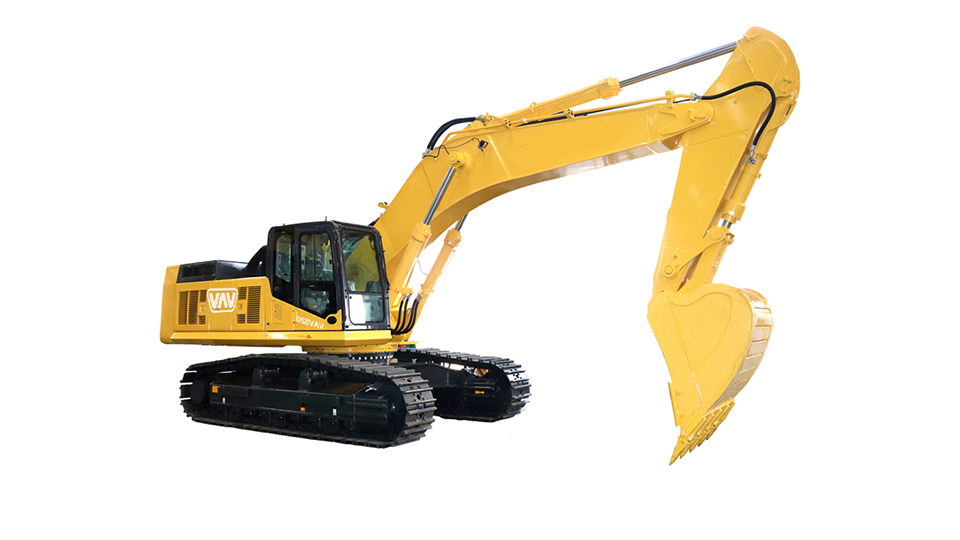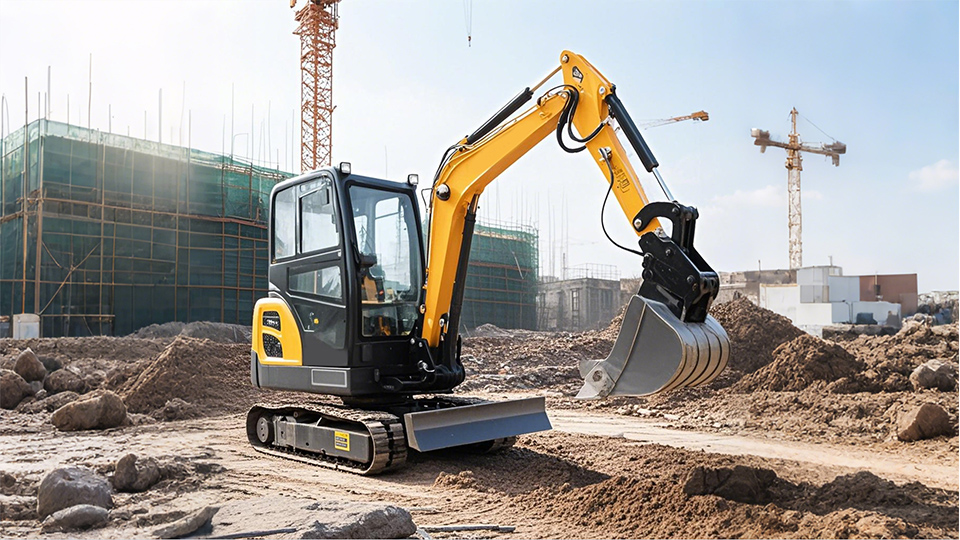The earthmoving landscape is dominated by the powerful silhouette of the excavator. These versatile machines, with their articulated arms, digging buckets, and robust tracks, are essential for construction, demolition, mining, and various infrastructure projects. Among the diverse range of excavator sizes, the "30-ton class" represents a significant workhorse, striking a balance between power, reach, and maneuverability. However, the seemingly simple designation of "30-ton" doesn't paint the full picture of the machine's physical dimensions and operational capabilities. This technical article delves into the typical size parameters of a 30-ton excavator, exploring the key dimensions, their implications for operation and transport, and the factors that can influence these measurements.
Defining the "30-Ton Class": A Matter of Operating Weight
The "tonnage" designation for an excavator primarily refers to its approximate operating weight in metric tons. A 30-ton excavator, therefore, typically weighs somewhere in the vicinity of 30,000 kilograms (approximately 66,000 pounds). This operating weight includes the base machine, undercarriage, boom, arm, bucket, fluids, and a standard operator. It's crucial to understand that this is a nominal classification, and the actual operating weight of different models within the 30-ton class from various manufacturers can vary slightly, often ranging from around 28 to 35 metric tons.
Key Dimensional Parameters of a 30-Ton Excavator

Overall Length: This dimension represents the total length of the excavator from the tip of the bucket (in a standard transport position) to the rear of the counterweight. For a 30-ton excavator, the overall length typically falls within the range of 9 to 11 meters (approximately 30 to 36 feet). This length is a critical factor for transportation on lowboy trailers and maneuvering within confined job sites.
Overall Width: The overall width is primarily determined by the width of the undercarriage tracks. For a 30-ton excavator, the track width usually ranges from 3 to 3.5 meters (approximately 10 to 11.5 feet). This width provides stability during operation and influences the machine's ability to traverse different terrains. Some models may offer optional track widths for specific applications or transport requirements.
Overall Height (to Top of Cab): The height of the excavator cab from the ground is an important consideration for overhead clearances and transport limitations. A typical 30-ton excavator will have an overall height to the top of the cab in the range of 3 to 3.5 meters (approximately 10 to 11.5 feet).
Tail Swing Radius: This dimension is crucial for understanding the excavator's rotational footprint and its suitability for work in confined spaces. There are two main types of tail swing designs:
Conventional Tail Swing: In this design, the rear of the counterweight extends beyond the width of the tracks during rotation. For a 30-ton conventional tail swing excavator, the tail swing radius can range from 3 to 3.5 meters (approximately 10 to 11.5 feet). This means the total swing diameter can be double this figure.
Reduced or Zero Tail Swing: Some 30-ton excavators are designed with a reduced or zero tail swing, where the counterweight stays within or very close to the width of the tracks during rotation. This significantly reduces the risk of collision with obstacles in tight work areas. The tail swing radius for these models will be considerably smaller, often just slightly exceeding the track width.
Maximum Digging Depth: This specification indicates the deepest point the bucket teeth can reach below the ground level on which the excavator is sitting. For a 30-ton excavator with a standard boom and arm configuration, the maximum digging depth typically ranges from 6 to 7.5 meters (approximately 20 to 25 feet). This depth is a key factor in determining the machine's suitability for excavation tasks such as trenching and foundation digging.
Maximum Reach at Ground Level: This dimension represents the furthest horizontal distance the bucket teeth can reach along the ground level from the excavator's center of rotation. A 30-ton excavator typically boasts a maximum reach at ground level of 9 to 11 meters (approximately 30 to 36 feet). This reach is essential for tasks like loading trucks and reaching over obstacles.
Maximum Cutting Height: This specification indicates the maximum vertical height the bucket teeth can reach above the ground level. For a 30-ton excavator, the maximum cutting height usually falls within the range of 9 to 10 meters (approximately 30 to 33 feet). This height is important for tasks like loading high-sided trucks and demolition work.
Maximum Dumping Height: This dimension specifies the maximum height the bucket can be raised to when fully extended, allowing for material to be dumped into trucks or other receptacles. A 30-ton excavator typically has a maximum dumping height of 6 to 7 meters (approximately 20 to 23 feet).
Factors Influencing Excavator Size and Specifications
It's important to note that the dimensions provided above are typical ranges, and the exact specifications of a 30-ton excavator can vary depending on several factors:
Manufacturer and Model: Different manufacturers design their excavators with varying geometries and component layouts, leading to slight differences in dimensions and performance characteristics. Specific models within the 30-ton class from the same manufacturer may also have variations based on their intended application.
Boom and Arm Length: Excavators can be configured with different boom and arm lengths to optimize for specific tasks. Longer booms and arms generally provide greater reach and digging depth but may come with a slight reduction in lifting capacity. Shorter booms and arms offer increased lifting capacity and digging force.
Undercarriage Type: While most 30-ton excavators utilize standard track undercarriages, some specialized models might feature long undercarriages for increased stability on slopes or uneven terrain. This would affect the overall length and potentially the width of the machine.

Counterweight: The size and weight of the counterweight can influence the overall rear swing radius and the machine's stability. Heavier counterweights allow for lifting heavier loads at a greater reach but may increase the overall length.
Optional Attachments: The use of various attachments, such as different bucket sizes, hydraulic hammers, shears, or grapples, can affect the overall length and weight distribution of the excavator.
Implications of Size for Operation and Transport
The size of a 30-ton excavator has significant implications for its operation and transport:
Job Site Suitability: The overall dimensions, particularly the swing radius, determine the excavator's maneuverability and suitability for different job site sizes and configurations. Zero or reduced tail swing models are preferred for confined spaces, while conventional tail swing models often offer greater stability and lifting capacity.
Transportation: The weight and dimensions of a 30-ton excavator necessitate specialized transportation equipment, typically a lowboy trailer. Height and width restrictions on roadways must be carefully considered when planning transportation routes. Permits may be required for oversized loads.
Lifting Capacity: While not a direct dimensional measurement, the size and weight of the excavator are closely related to its lifting capacity. A 30-ton excavator offers a significant lifting capacity, making it suitable for handling large and heavy objects. However, the actual lifting capacity varies depending on the boom and arm configuration, the load radius, and the stability of the machine.
Ground Pressure: The operating weight distributed over the area of the tracks determines the ground pressure exerted by the excavator. A larger track footprint generally results in lower ground pressure, allowing the machine to work on softer or more sensitive surfaces.
Conclusion: A Powerful and Versatile Earthmover
A 30-ton excavator represents a substantial piece of earthmoving equipment, offering a powerful combination of digging force, reach, and lifting capacity. While the nominal "30-ton" designation provides a general indication of its size class, the actual physical dimensions can vary between manufacturers and models. Understanding the key dimensional parameters, such as overall length, width, height, swing radius, digging depth, and reach, is crucial for planning operations, ensuring safe transportation, and selecting the appropriate machine for the specific task and job site conditions. The 30-ton excavator stands as a versatile and productive asset in the construction and earthmoving industries, its significant size reflecting its considerable power and capabilities. When considering a machine in this class, it's essential to look beyond the tonnage and delve into the specific dimensional and performance specifications to ensure it meets the project's demands effectively and efficiently.
Post time:Sep-25-2020
